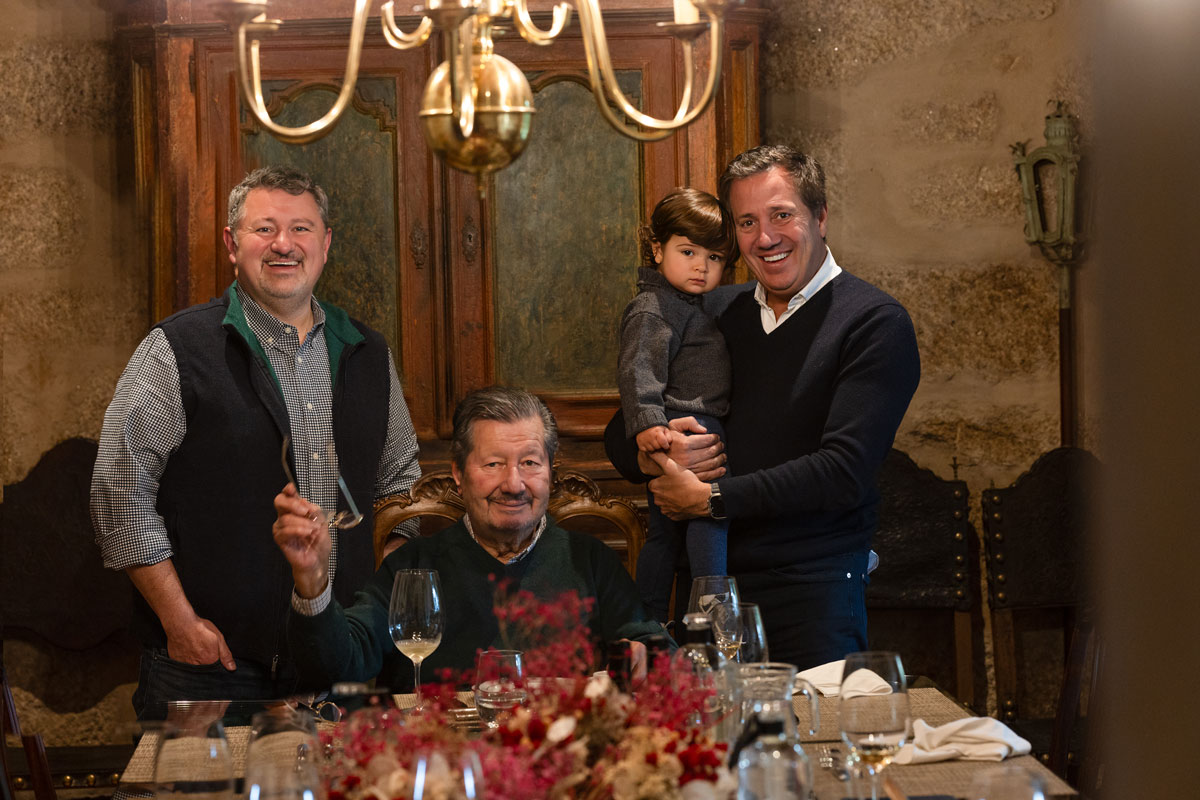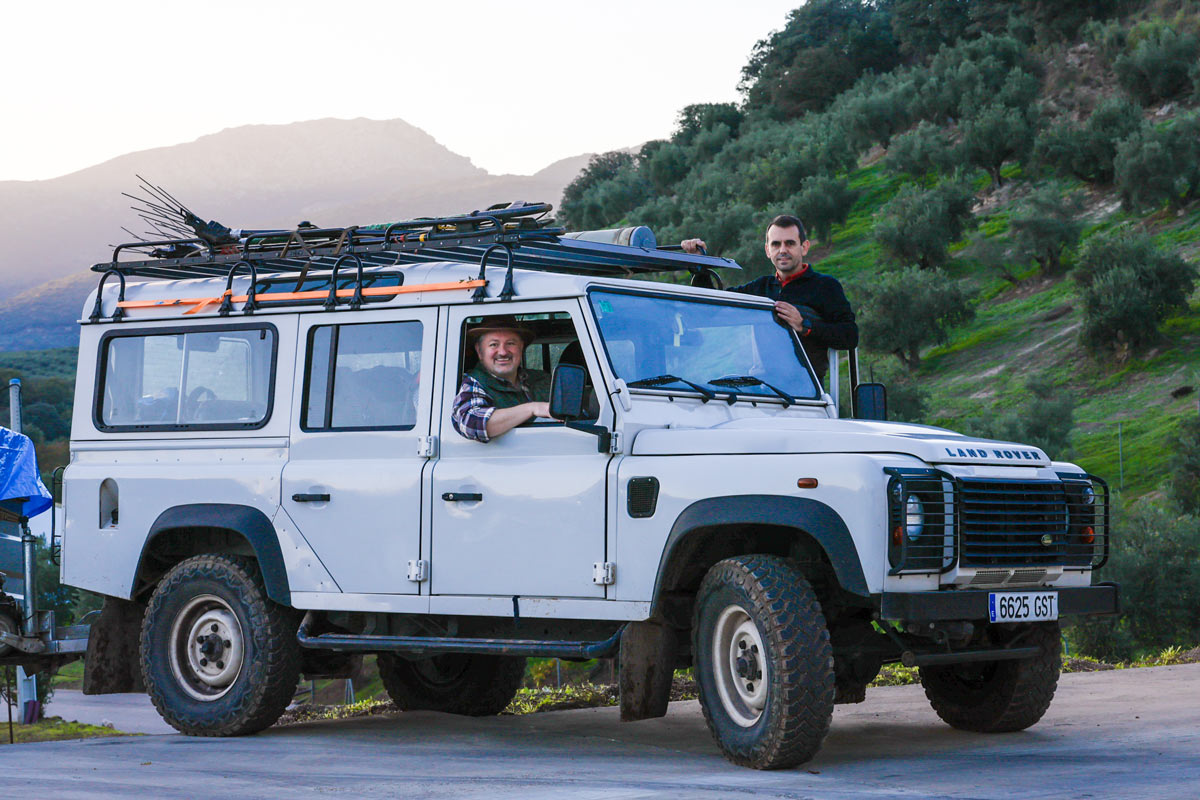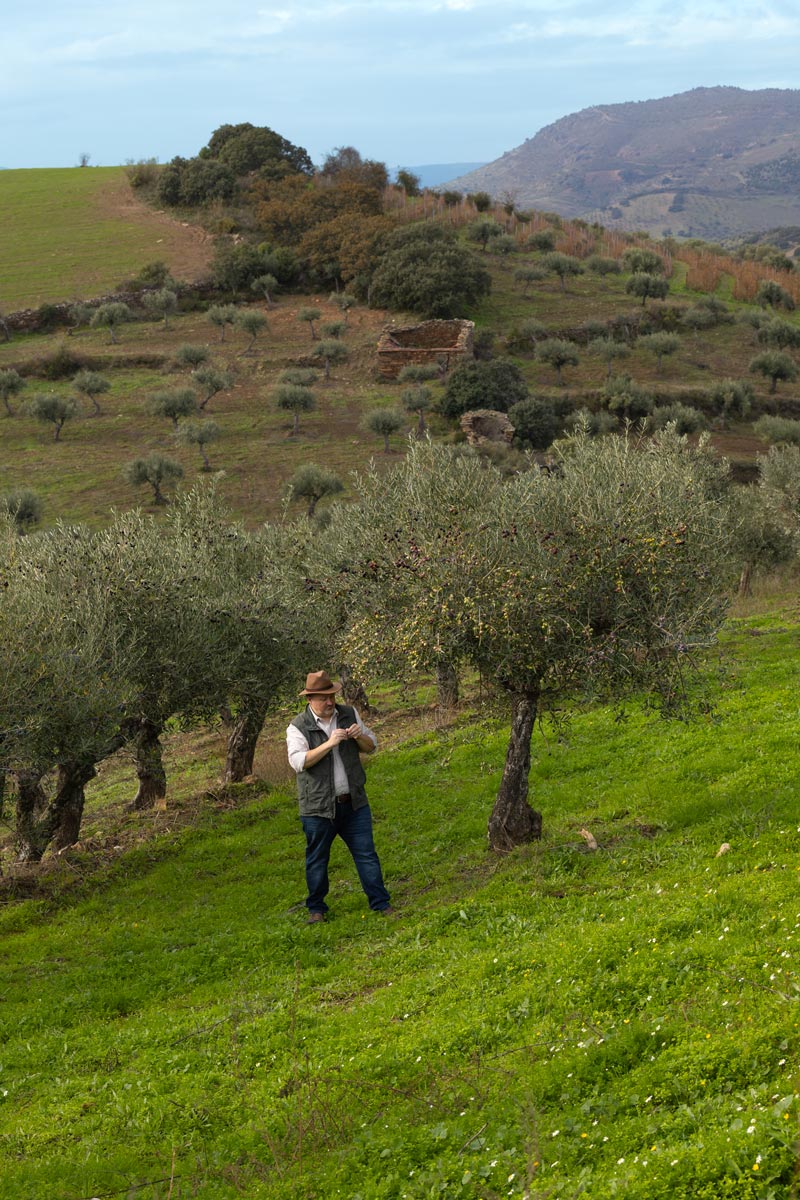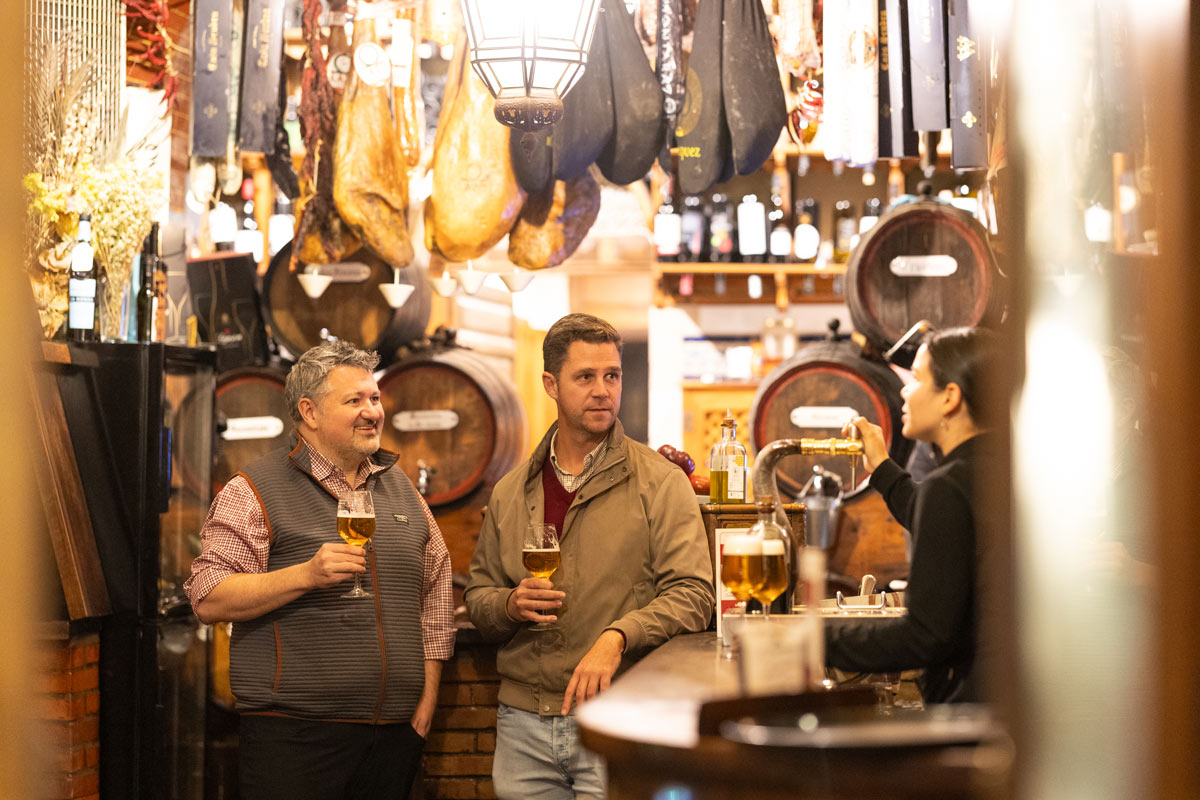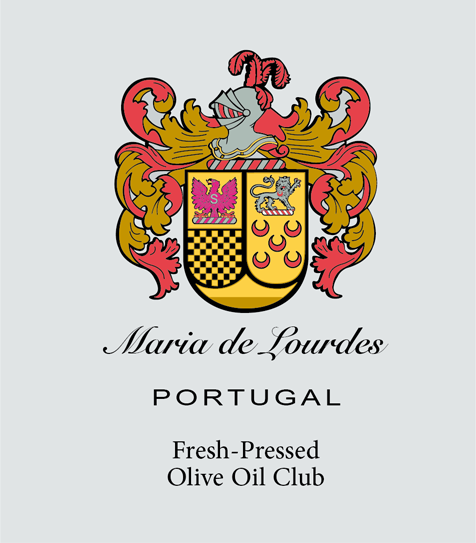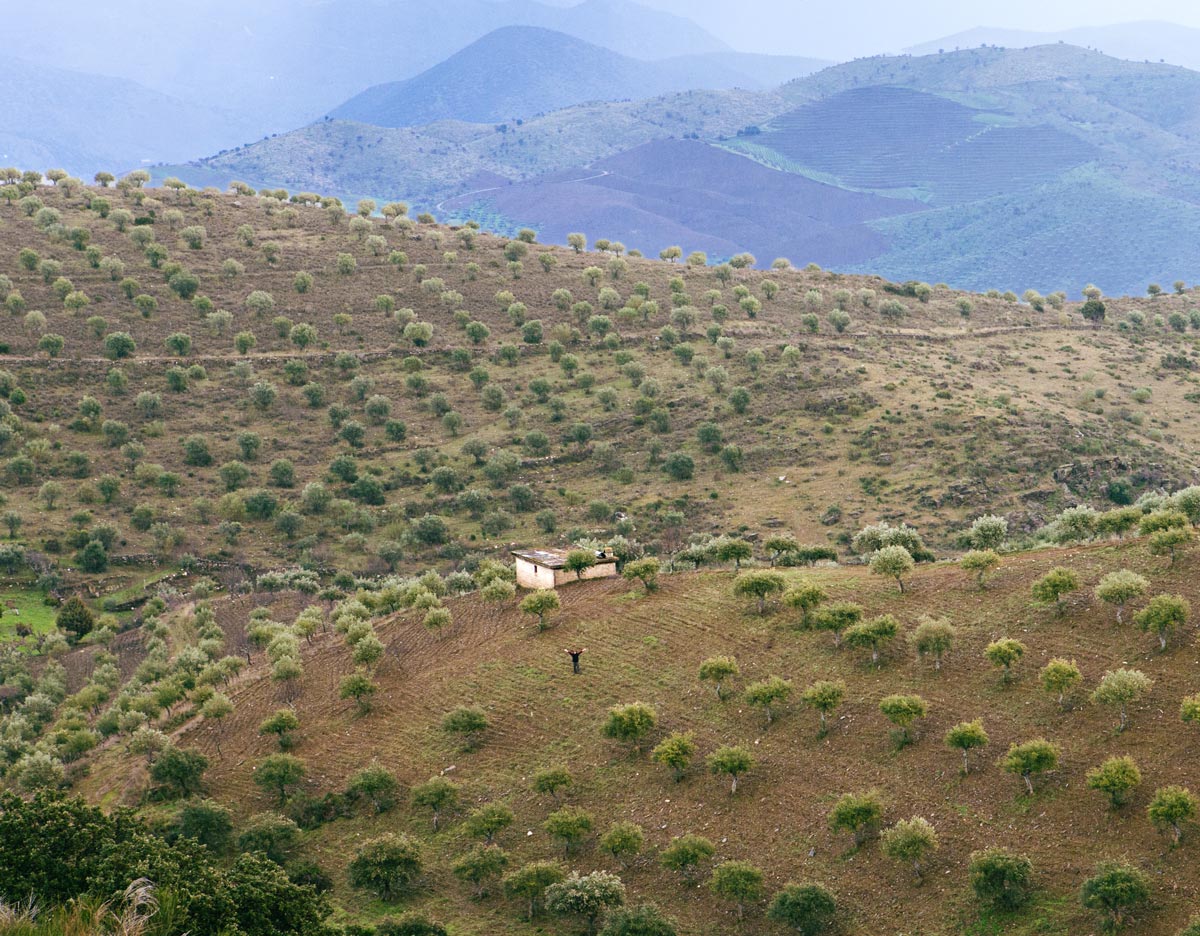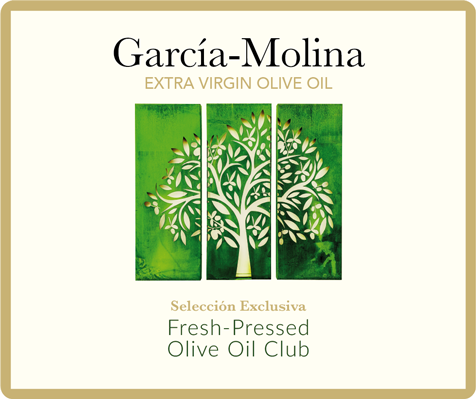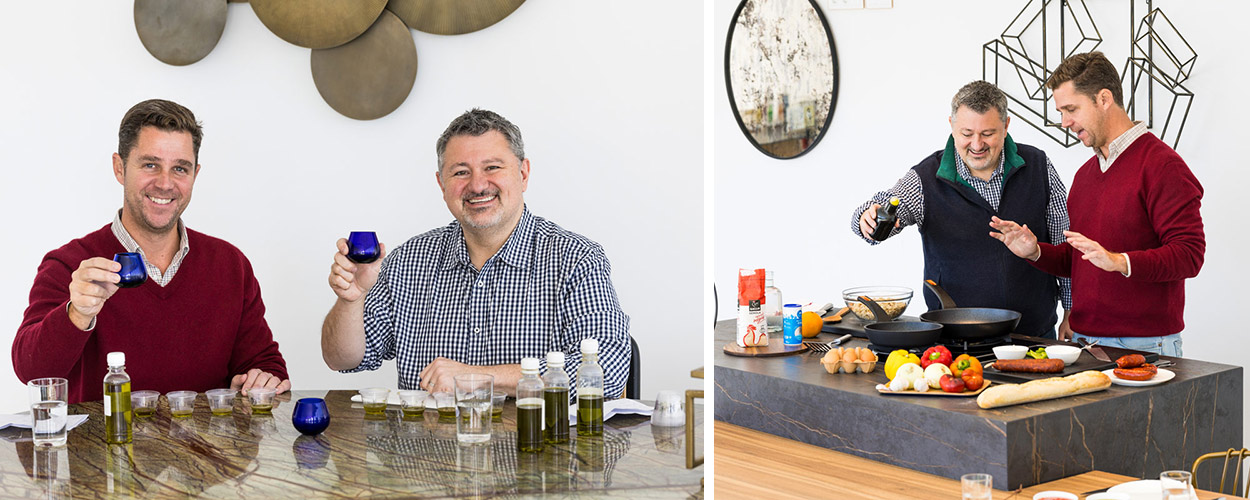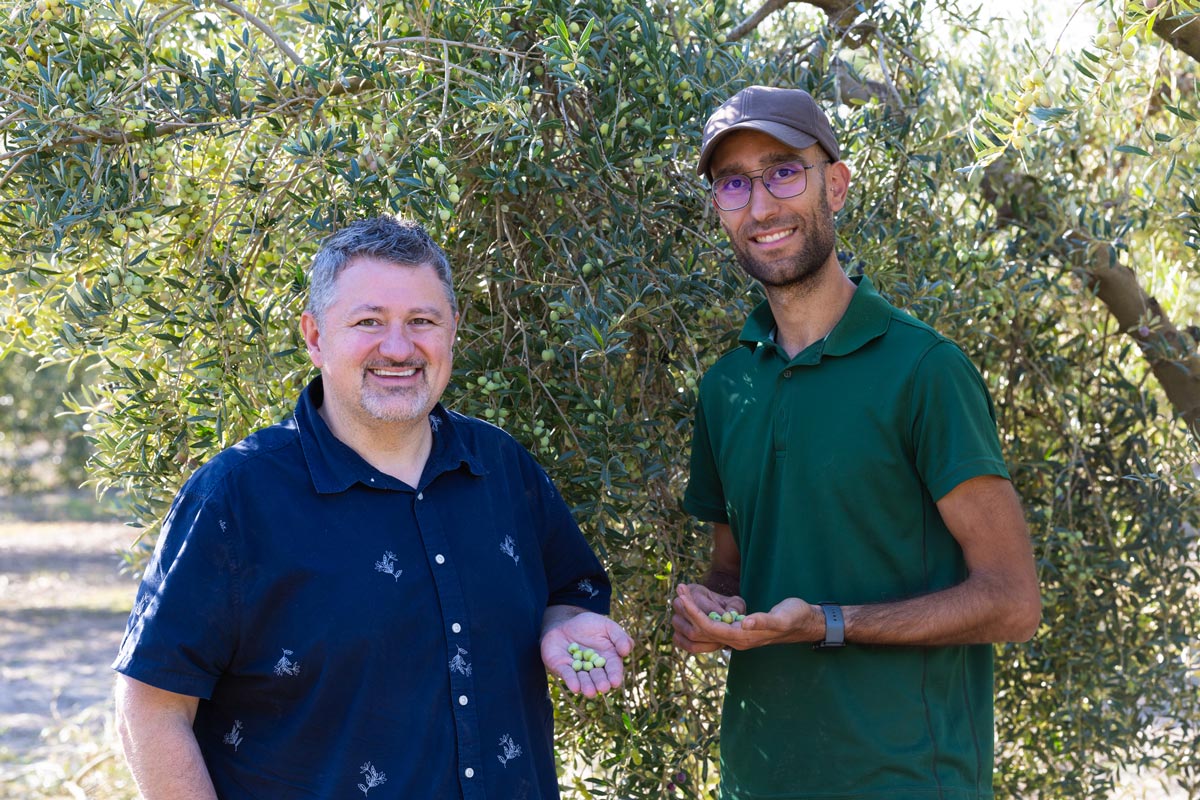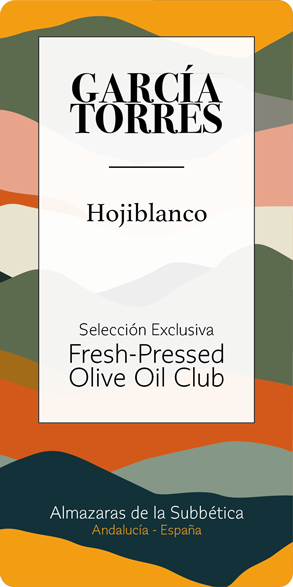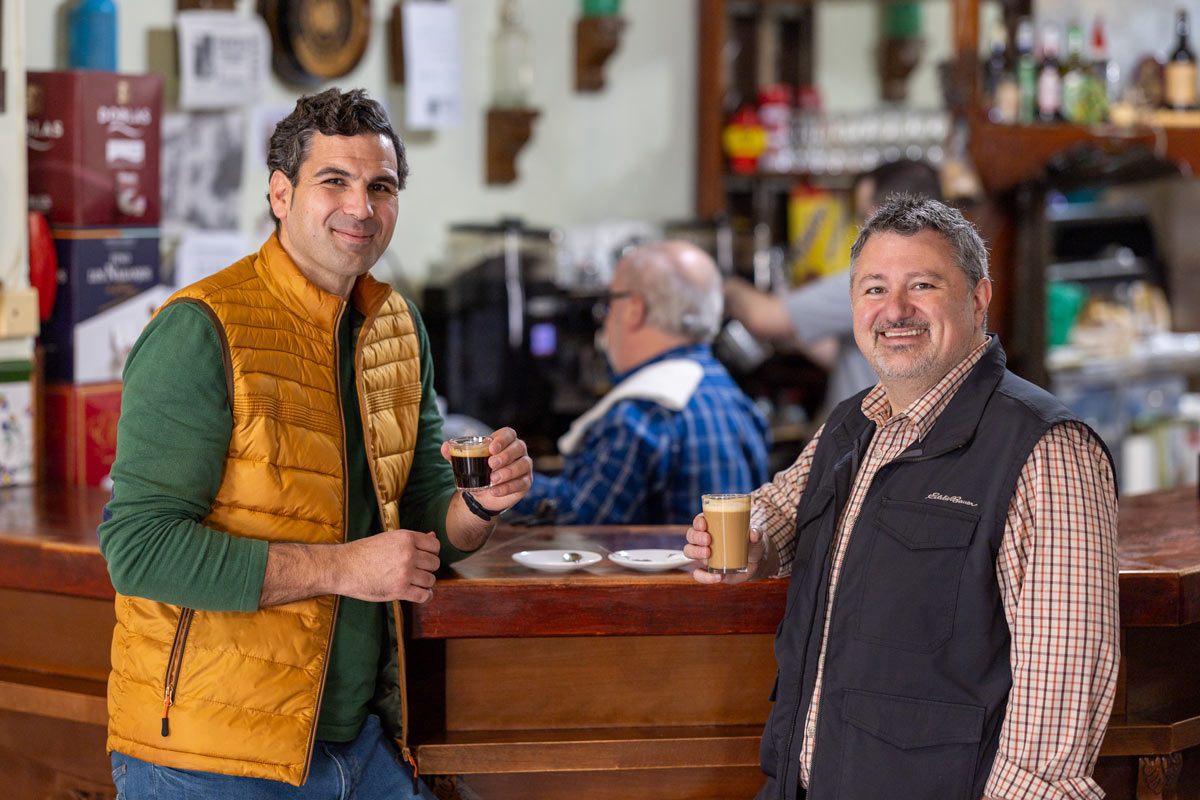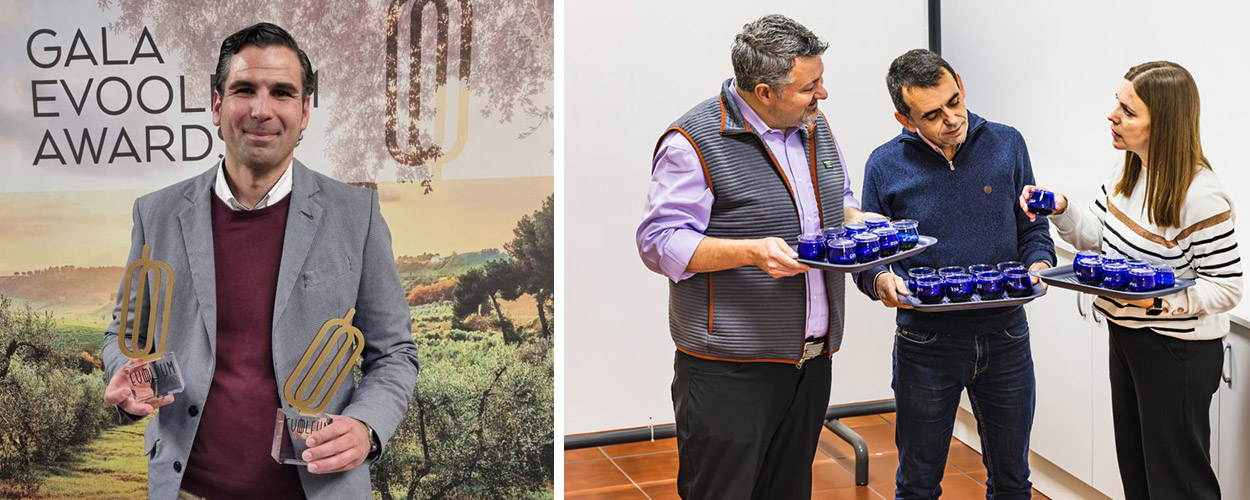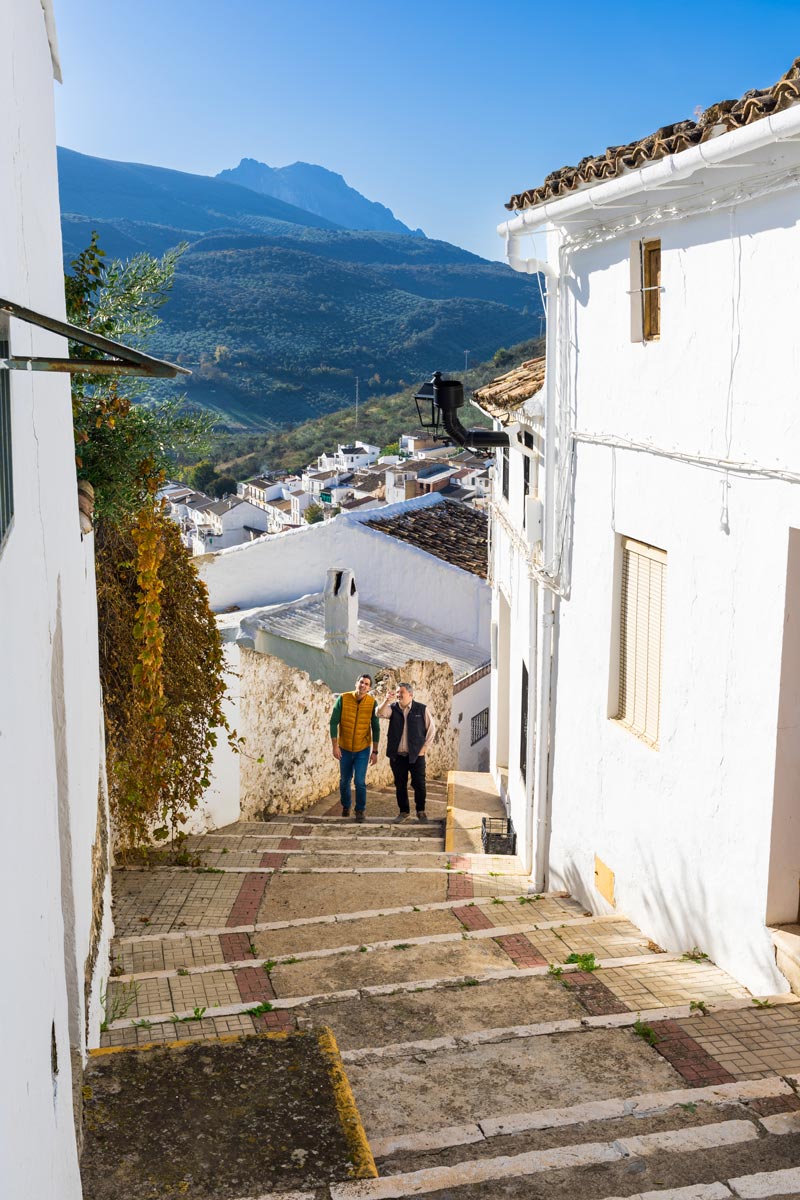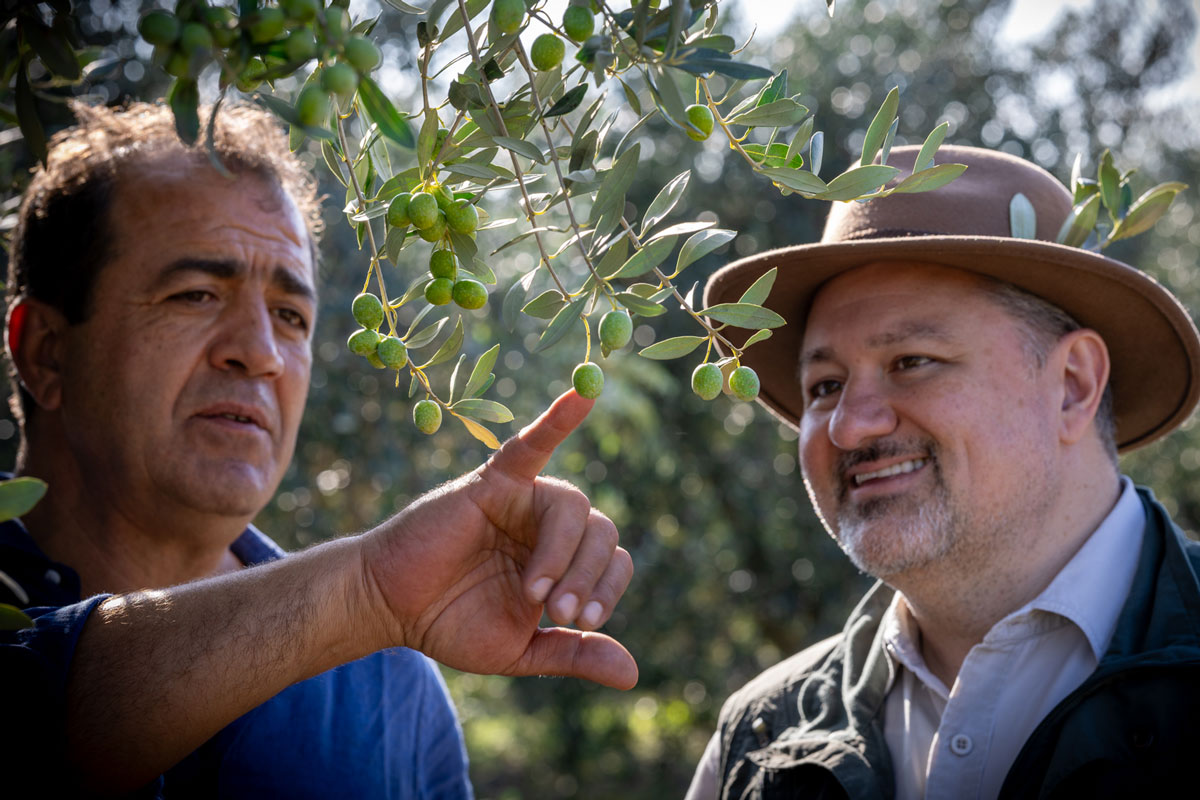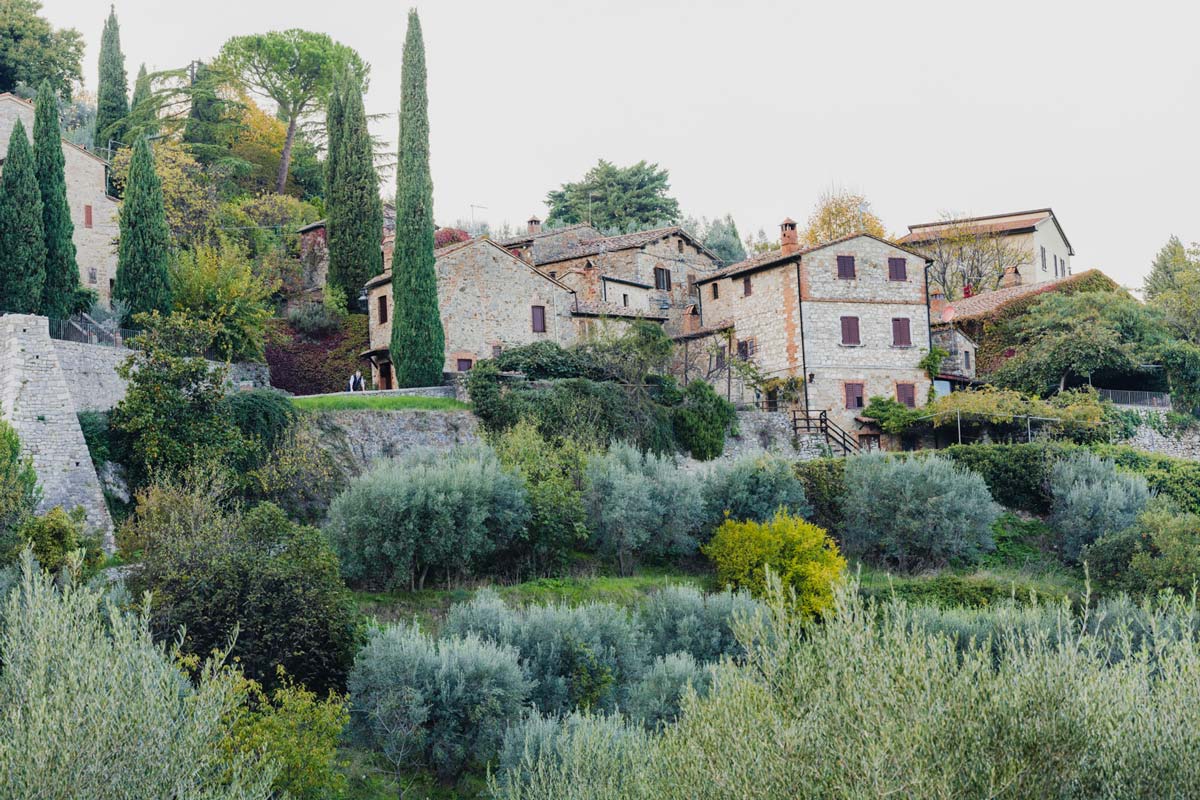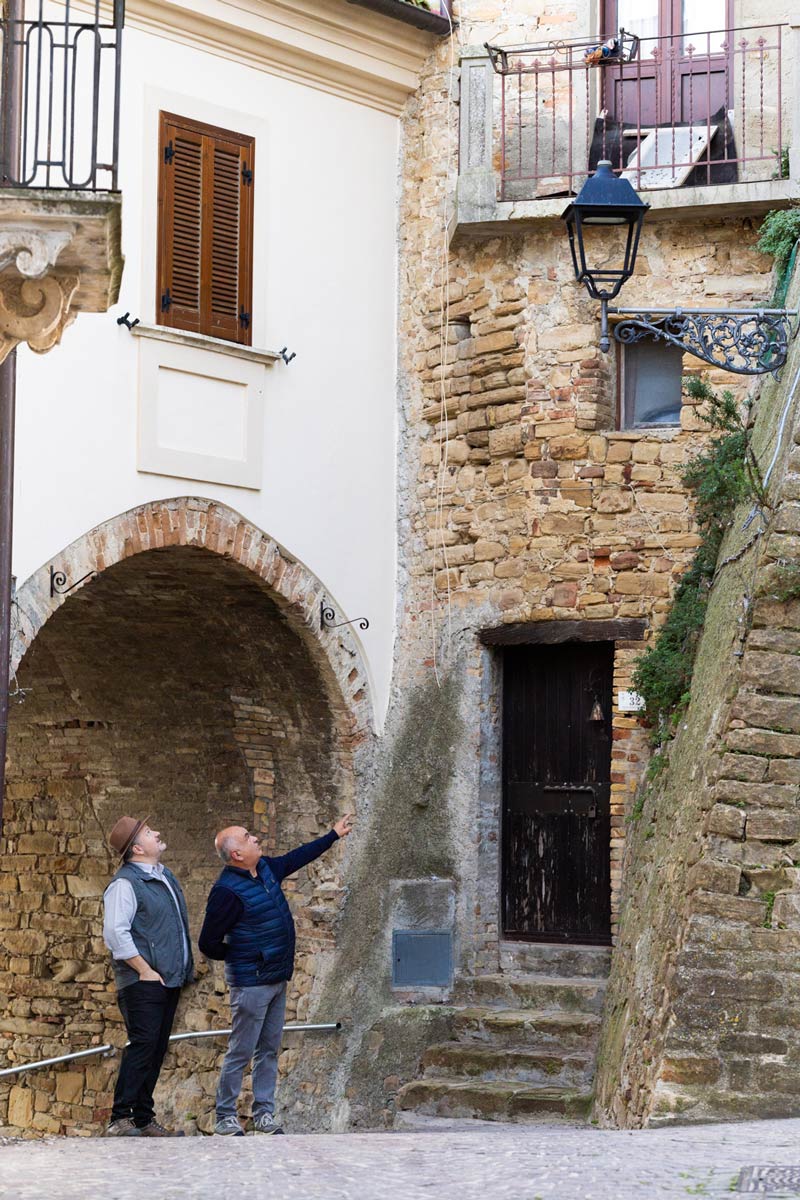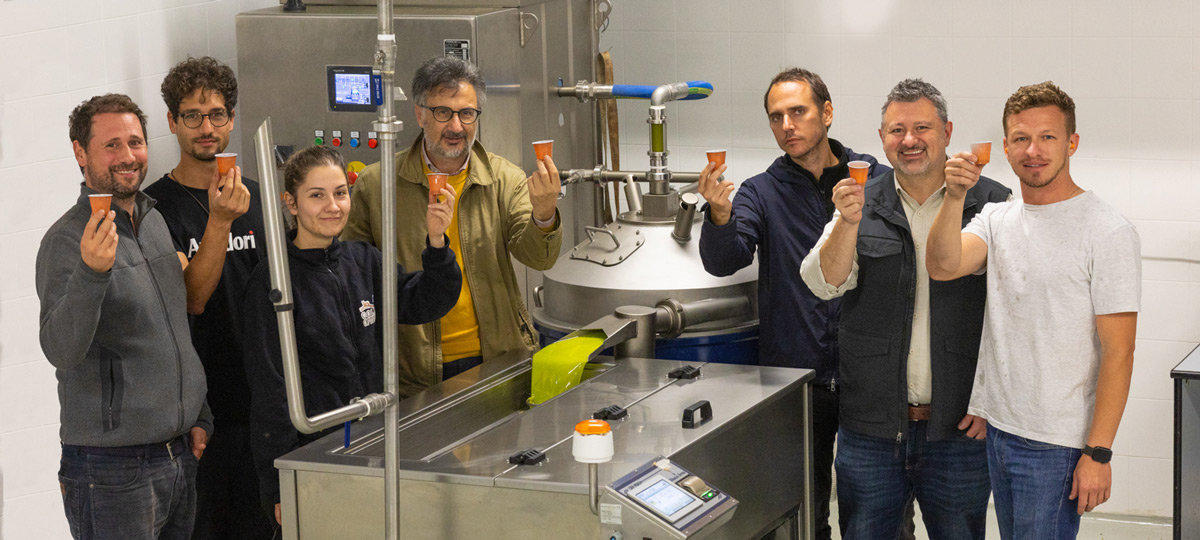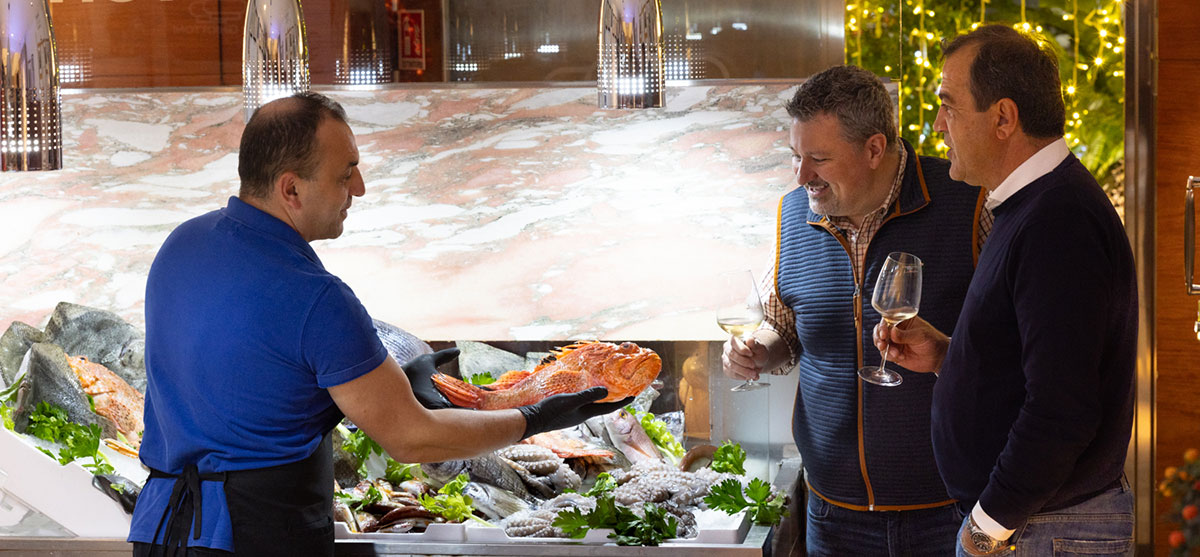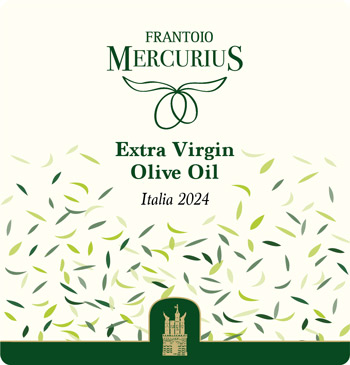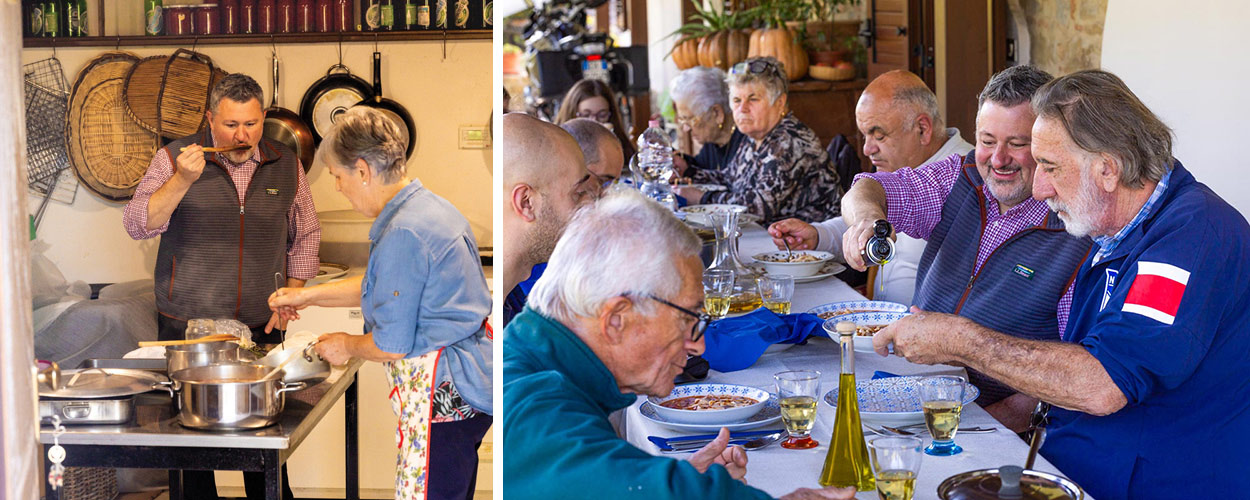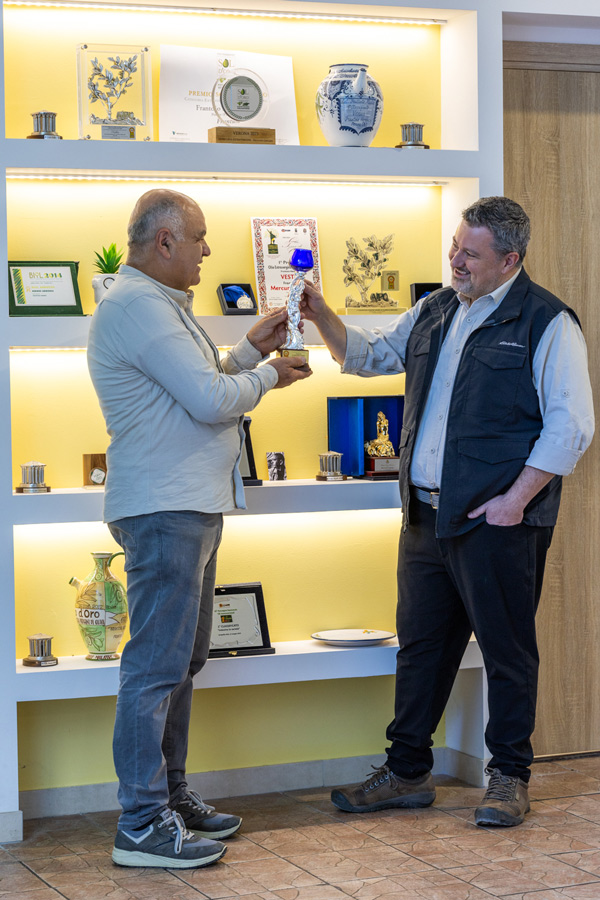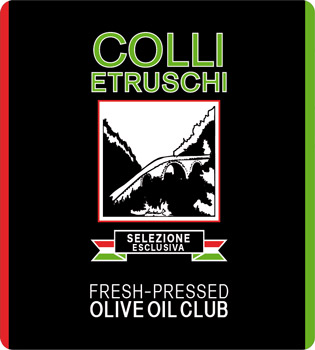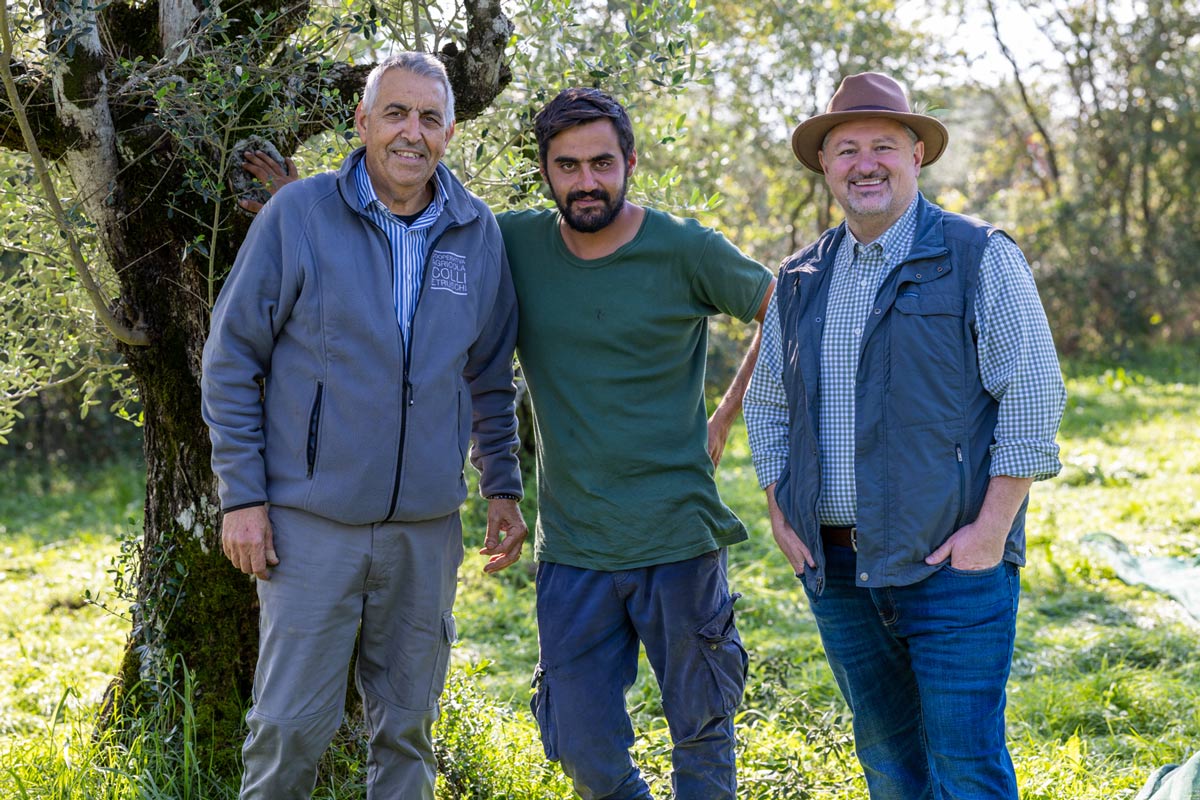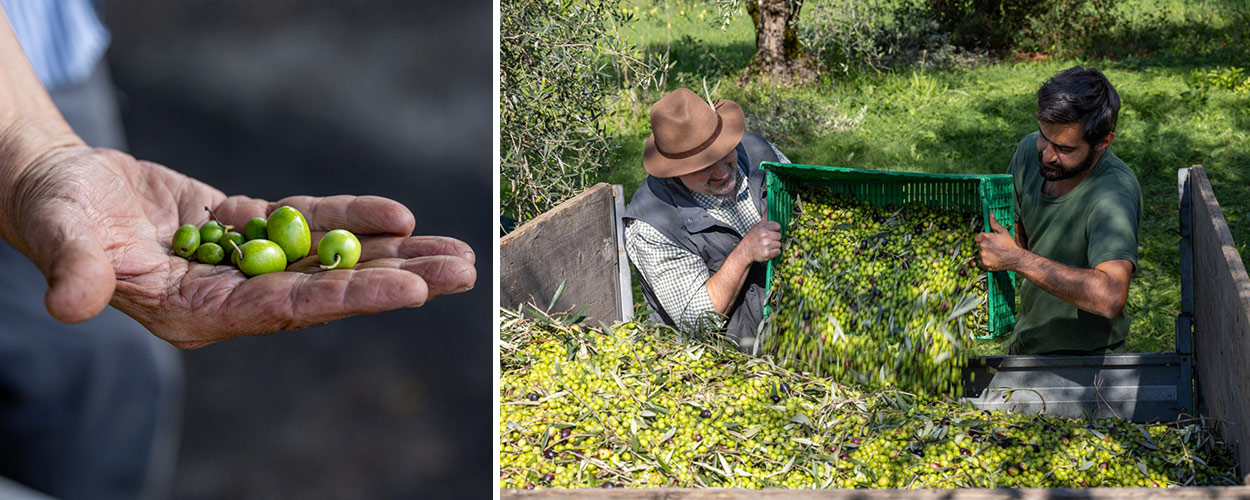Direct From Australia! A Trio of Exquisite Extra Virgin Olive Oils All From Gold-Medal-Winning Farms Perfect for Your Autumn Table
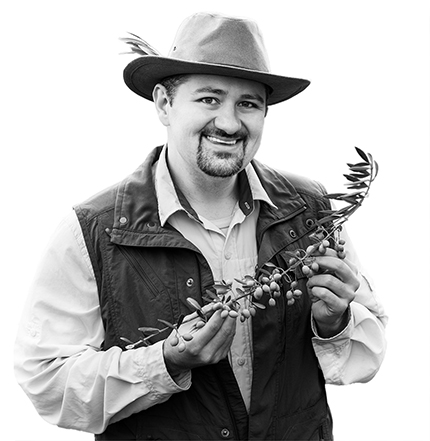
- Food-friendly fresh-pressed oils created by your Olive Oil Hunter and the leading Aussie artisanal producers.
- Unique expressions of prized varietals and rich in polyphenols, the source of EVOO’s wide-ranging health benefits.
- Rushed to the US by jet to maximize freshness and independently certified to be 100 percent extra virgin olive oil.
It’s not hyperbole to say that I travel to the four corners of the world to find Club members the freshest and food-friendliest extra virgin olive oils on the planet. Though my annual visit to Australia is the longest trip I make each year—close to 24 hours in the air—I always look forward to it because the island continent is like no other: the people, the landscapes, the food.
Many people are surprised that the southeastern state of Victoria produces exquisite olive oil, not realizing that its climate, indeed its many microclimates, mirror the growing conditions around the Mediterranean. The history of Australian extra virgin olive oil is decidedly shorter, but the growers I’ve forged relationships with (for well over a decade now) are every bit as passionate as their European counterparts—they live and breathe olive oil.

Aussie EVOO is so delectable because the producers know how to balance art and science to create superb New World olive oils from Old World varieties. Consider Kyneton, producer of our bold oil: estate manager Mick Labbozzetta’s parents came here from Italy, and he’s joined for every harvest by Davide Bruno, an Italian master miller—the seasons of the Southern Hemisphere occur at opposite times of the year, so many European experts are able to travel here and share their knowledge.
An Embarrassment of Riches
Melbourne, my first stop in Australia, is synonymous with Melissa Wong, olive oil authority, former restauranteur, fellow foodie, and all-around gastronomic genius. Her exquisite palate is so appreciated at the grand tastings she organizes for my Merry Band of Tasters and me. This year had a delicious twist: like the surf along Victoria’s beaches, the fresh-pressed olive oil samples came in seemingly endless waves. Every time I thought we had crafted the perfect blends, more contenders—superstars all—arrived for us to taste. “Recalibrate” became our mantra.

With such an array of delicious and unique oils to choose from, you might think that the season was a slam dunk, but, in actuality, many growers lost huge amounts of olives because of Mother Nature’s mean bag of tricks, specifically an unexpected frost that killed the blossoms of early-flowering varietals. According to world-renowned olive savant, master miller, and honorary member of my Merry Band, Leandro Ravetti, growers lost on average 40 percent of potential olives to frost. Indeed, when we met up, my good friend John Symington of Oasis, a name familiar to Club members, told me that one of his farms had lost 90 percent of its olives!
The saving grace? The Aussie producers we worked with knew how to pivot and focus on pampering their late-flowering varietals. Another important edge is that they have groves in various microclimates, sometimes hundreds of miles apart, so we’re never counting on just one. However, they faced other challenges—the summer was very hot and dry, and it took a long time for autumnal temperatures to arrive. That meant harvesting earlier in the day, working on the cooler days, and, in some cases, pausing the harvest. The bottles you now have in front of you are testament to their skills in the field and the mill.

Oz: Always in Good Taste
Second only to the pleasure I take in sampling fresh-pressed oils is discovering new food trends and sharing them with you. Melbourne (or Mel-buhn, as the locals pronounce it) is a foodie city, and it’s wonderful to see how its restaurants have embraced ultra-premium extra virgin olive oil. At Antara, for instance, the chefs created a dining series featuring local oils, with dishes that included wood-fired scallops, a duck parfait, and a citrus pavlova, all lavished with EVOO. There’s also a huge coffee culture here, and a brew called tiger bomb is all the rage (I’ve given it my own spin in the recipe section below).
It’s no secret that everywhere I go, I take the best of the fresh-pressed olive oil blends with me to make sure they pair perfectly with many cuisines before I deem them ready for the Club—that’s easy to do in Australia because so many restaurants specialize in ethnic cuisines. The three selections you’re about to try have met my self-avowed impossibly high standards, so I know you will enjoy them throughout the season on all your favorite autumn dishes, as will I.
Happy drizzling!

T. J. Robinson
The Olive Oil Hunter®
This Quarter’s First Selection
- Producer: AuLife Middle Park, Australia
- Olive Varieties: Picual
- Flavor Profile: Mild

When Melissa Wong and I first met at the original Food Network studios in New York, now nearly 25 years ago, I could never have dreamed that we would forge such a deep friendship and one day be working together so closely…on the other side of the world. When the Fresh-Pressed Olive Oil Club was just a gleam in my eye, this gracious and elegant food-globetrotter partnered with Michelin chef Claudio Sadler to open a branch of his Sadler Ristorante in Beijing. When Melissa and her husband Robert decided to relocate from Asia to Melbourne, she founded AuLife to promote Australia’s extraordinary olive oils and other gourmet specialty foods.
With her meticulous judgment and discerning palate, Melissa has become one of my most trusted collaborators in Australia—my “boots on the ground,” as I often refer to her. Our relationship has only deepened over the years. In recent seasons, I’ve been thrilled to be back in her beautiful home—not only for our marathon tastings but also for collaborating with her on recipes. (She’s such a foodie that she’s the only person I know to have a Berkel, the top-of-the-line meat slicer, in their home kitchen!)

Melissa, originally from Vancouver, Canada, is an ultra-savvy EVOO scout and always has the inside scoop on the Oz olive oil scene. As we reviewed the many contenders for this quarter’s trio, she shared her vision for our mild selection: create an exceptional oil from two unique Picuals—one from Boort and the other from Kialla. Being a phenomenal taster, Melissa knew that this could be a powerful marriage. The two groves were 100 miles from each other, and while that might not seem like a great distance, each is a product of its terroir—literally, “sense of place,” which accounts for the different expressions of the same varietal. So many aspects of the environment, such as climate, soil, topography, and elevation, come together to create an oil’s distinctive characteristics. While one of the Picuals in this blend can be described as highly aromatic, the other has more structure, bitterness, and spiciness to it. We worked together to find just the right ratio, and the exquisite result is definitely greater than the sum of its parts.
Picual lovers will note the difference between the Aussie and the Spanish styles—there’s a wonderful tropical aspect to this olive oil, yet it also has intense flavor, perfect for autumn dishes from bruschetta to roasted root vegetables, soups, and stews.

Impressions and Recommended Food Pairings
This enchanting Picual has rich aromas of tomato and green grass, complemented by green banana, Asian pear, and tropical fruit. There are also notes of Bibb lettuce, celery, and white pepper, along with herbal notes of parsley, rosemary, and mint. When we sipped from the glass, we tasted tomato, baby lettuces, celery leaf, and green tea; the bitterness of radicchio and Belgian endive; and the spiciness of black pepper, with a sweet finish, persistent of fresh mint.
This exquisite oil will elevate mild vinaigrettes, tomato dishes, Asian salads, puréed soups, roasted “dirty” martini shrimp cocktail,* crudo, chicken and vegetable sheet pan “stir fry,” pasta, risotto, Melissa’s prawn and pork dumplings, white beans, lentils, couscous, baked sweet potatoes, pumpkins, and squash, fruit dishes, yogurt, ice cream, ANZAC cookies, and quick breads.
*See the recipe section for bolded dishes.
This Quarter’s Second Selection
- Producer: Nullamunjie Tongio, Australia
- Olive Varieties: Correggiola, Coratina, Leccino, Pendolino
- Flavor Profile: Medium

Though we love Melbourne’s big-city vibes, my Merry Band of Tasters and I are always eager to head northeast to bucolic East Gippsland to visit the award-winning Nullamunjie olive groves and its charming proprietress, Annie Paterson.
A visit to Greece in her early twenties ignited Annie’s passion for olive oil. To this day, she remembers a trip along the Aegean coastline, admiring the sage-colored leaves of olive trees framed by the windows of the tour bus. The large cattle ranch where she grew up was on the 37th parallel, the antipodal twin of the Mediterranean’s olive-growing region. She surmised that olive trees would thrive there. Alas, her father declined to sell land to her.
So, the next few decades of her life passed conventionally. Annie married successful Melbourne businessman and entrepreneur John Paterson, with whom she raised four children. Then, in 1998, Annie resurrected her dream by buying several hundred acres of family land on the slopes of Mt. Stawell. Appealingly, there was a water source for irrigation—the Tambo River. John was supportive of his wife’s olive oil ambitions, accepting Annie’s frequent absences and often traveling with her to the groves some 250 miles away from their home.
As always, it was wonderful to see Annie again. John, who serves on numerous corporate boards, was also able to join us this year—a rare treat. Despite working long hours at the pressing shed (Aussie slang for “mill”), Annie was her usual effervescent self, always leaving laughter and hilarity in her wake. John lovingly restores her energy and good humor after a long day by opening a nice bottle of red wine and by preparing one of his specialties—spaghetti bolognese or hearty beef bourguignon.

She had us in stitches one evening, describing the flocks of yellow-crested cockatoos that pinch off olive-bearing branches with their wickedly sharp beaks. Not to eat them, Annie clarifies, but simply for the birds’ own amusement. To combat them, she has dispatched drones, fired a percussive gun, and resorted to screaming at them. “They’re very intelligent,” Annie says. And, evidently, very difficult to disperse.
Nullamunjie oils, she told us, will soon be used in a hip new restaurant in Sydney called 20 Chapel. Chef Costelloe’s signature dish is woodfired Wagyu steak drizzled with extra virgin olive oil. Annie confided that this is one of her favorite uses of her oils. (Try it for yourself.)
Despite the cockatoo scourge, incursions into the groves of deer and oafish kangaroos (both of which can trample young seedlings), and untimely temperature extremes, Annie was very pleased with the quality of this season’s oils. I was, too! The farm blend we created especially for you—a special thanks to indispensable Nullamunjie operations manager Riley Nivens—features Italian varietals in a unique and food-friendly combination. I am always astounded by Annie’s commitment to excellence, using innovative strategies, upgrading equipment, buying additional land, planting new trees, and following sound environmental practices. Most of all, I salute this septuagenarian’s boundless energy and continued investment in her farm’s future.

Impressions and Recommended Food Pairings
This assertive blend of Correggiola, Coratina, Leccino, and Pendolino delights with the scents of sweet almond, fennel, Tuscan kale, artichoke, arugula, kiwi, green peppercorns, and thyme, along with nutmeg, cinnamon, and vanilla. Its complexity was apparent on the palate with the essence of green artichoke and fresh walnuts, dark leafy greens such as Swiss chard, fresh oregano, the sweetness of golden apple, bitterness of cacao beans, and spiciness of black pepper and arugula.
Lavish this oil on bruschetta, hearty salads, and salads with nuts; Australian zucchini breakfast slice* and other egg dishes; duck, roasted chicken, and turkey; steaks; pasta with meat sauces; fatty fish, octopus, and calamari; pizza; gai lan, roasted root vegetables, and garbanzo beans; Annie’s baked pears, and chocolate and nut-based desserts.
*See the recipe section for bolded dishes.
This Quarter’s Third Selection
- Producer: Kyneton Bylands, Australia
- Olive Varieties: Coratina, Frantoio
- Flavor Profile: Bold

“Super green…slightly lighter green…but all green,” is how master miller Davide Bruno described the gorgeous Coratina olives showcased in this superstar EVOO. Davide, who’s worked with Kyneton since 2018, knows exactly what I prize: early-harvest oil, pressed during that magic window when the fruit is at the peak of its flavor and brimming with healthful polyphenols.
Victoria-based Kyneton, one of the pioneers of Aussie ultra-premium olive oil, has been a destination for me and my Merry Band of Tasters since 2009. In the intervening years, over several delicious Club collaborations, the Kyneton crew—headed by estate manager Mick Labbozzetta—and I have developed fond friendships, born of an ever-evolving mutual desire to create great olive oil. Kyneton’s motto is “Australian made, Italian heritage,” embodied by its all-Italian (and Italian-descent) team, state-of-the-art Italian milling equipment, and olive roster of mainly Italian varietals.

Mick was born in Adelaide to a Calabrian father and Sicilian mother, both of whom immigrated to Australia in the 1950s. He often looks like he stepped out of a classic film, dapper yet down-to-earth, with a trademark newsboy cap. He joined Kyneton in 2016 via what I described at the time as a “tale of two households,” like Romeo and Juliet, except the families liked each other and everyone lived happily ever after. Mick’s daughter, Melissa, is married to Robert Inturissi, whose family acquired Kyneton from the Trovatellos (whose award-winning farm was already a Club favorite). With everyone’s blessing, Mick took the helm, continuing and expanding Kyneton’s innovation and excellence.
Mick’s love of family extends to his production team: Davide Bruno joins for the harvest—the rest of the year, he works the opposite season as a master miller in his native Liguria—and is supported in the Kyneton groves year-round by Calabrian Carmelo Tramontana. When the three of them are in the harvest groove, Italian phrases buzzing while just-picked olives are being rushed to the mill, you’d swear you were in the old country.
During the off season, Mick took a long-anticipated trip to Italy, visiting his father’s village of Sinopoli as well as a mill in Calabria run by one of his dad’s old schoolmates. Mick and I reflected on how different European olive oil production can be. “They have their traditional habits,” he said, noting that the Australian way is much more open, more about sharing—not only fruit but also equipment, harvesting and milling techniques, and hard-earned wisdom.
I was thrilled to get advance word from Kyneton of an outstanding Coratina harvest—the first from a team they collaborate with near the town of Bendigo, about 200 km (120 miles) from Bylands. Mick and Davide worked closely with the farm’s growers, advising and optimizing. “Only green fruit for us, please, please,” Davide laughed, imitating his plea. The combination of exquisite Coratina, harvested at precisely the right moment; a splash of Frantoio, with soft almond flavors; and a new olive crusher in Kyneton’s mill enabled us to create a delectably harmonious oil, robust, well-balanced, and exceedingly food-friendly.

Impressions and Recommended Food Pairings
An intense Coratina with a splash of Frantoio, this oil has quite the aromatic bouquet: green almond, tomato leaf, spinach, and wheatgrass; the sweetness of green apple; floral notes of nasturtium; and chopped culinary herbs—rosemary, oregano, and basil. On the palate, there was an explosion of macadamia nut and green almond, watercress, raw artichoke, and fennel, with notes of dark chocolate and coffee, rosemary, wild mint, lime zest, and the tingling spiciness and bitterness of celery leaf and arugula.
It will pair exquisitely with crusty breads; beet and goat cheese salad* and dark leafy green salads; butterflied leg of lamb with za’atar, beef, game, tuna, and salmon; soba noodles and peas with olive oil–soy dressing, hearty pasta sauces, rice pilafs and other grain dishes; and chocolate mousse.
*See the recipe section for bolded dishes.
Olive Oil and Health
Psoriasis, acne, and hidradenitis suppurativa (HS) are chronic inflammatory skin conditions characterized by systemic inflammation and periodic flare-ups. The Mediterranean Diet (MeDi), which emphasizes vegetables, fruits, whole grains, nuts, fish, and EVOO, has proven anti-inflammatory and antioxidant effects. Here, we present recent evidence1 supporting that the MeDi, as part of a comprehensive treatment plan, may reduce the severity and flare-ups of these chronic skin conditions.
Psoriasis typically presents as itchy, red skin plaques, sometimes painful, with silvery borders. About 40% of people with psoriasis develop psoriatic arthritis, which can lead to irreversible joint damage.
Several studies show that closely following the MeDi is linked to lower psoriasis severity. (MeDi adherence was measured by scores on the 14-item PREDIMED food questionnaire.) People with the least adherence to the MeDi had the most severe psoriasis.
Notably, higher intake of EVOO and more consumption of fish (a main source of omega-3 fatty acids) were independently linked to less severe psoriasis and lower levels of CRP (C-reactive protein), a measure of inflammation. These findings suggest that both the MeDi as a whole, and the individual components of EVOO and fish, exert anti-inflammatory and protective effects in psoriasis via bioactive compounds, in particular MUFAs and vitamin D.
Acne has multiple contributing factors (genetic, environmental, bacterial) and, although it often emerges during adolescence, persists into the 20s and 30s in many people.
In a case-controlled study, participants with acne had significantly lower PREDIMED scores than did controls. Those with less severe acne were significantly more likely to consume EVOO, fish, and fruit; more severe acne was linked to lower adherence to the MeDi. (Another case-controlled study showed no significant association between the MeDi and acne severity.)
A separate study found that participants with higher MeDi adherence had lower systemic levels of IGF-1 (insulin-like growth factor 1), a protein that plays a key role in the development of acne.
HS is marked by painful lesions (boils) that often form in body areas with skin folds, such as the armpits, chest, and groin; these lesions can lead to scarring. Of all chronic skin conditions, HS has the most debilitating impact on quality of life.2
Three studies have confirmed a link between close adherence to the MeDi and lower HS disease severity. A large cross-sectional study found that consuming EVOO and choosing poultry over red meat were the main factors linking the MeDi to less severe HS in participants. Evidence indicates that the antioxidant and anti-inflammatory components of the MeDi—in particular, MUFAs, omega-3s, and polyphenols—can help reduce the severity of HS.
Key takeaway: The anti-inflammatory, antioxidant benefits of the MeDi distinguish it as a valid medical nutrition therapy (MNT) for the management of chronic inflammatory skin conditions, as
a holistic complement to pharmacological treatments.
References: 1. Annunziata G et al. Curr Nutr Reports. 2025;14(1):42. 2. Balieva F et al. Br J Dermatol. 2017;176(5):1170-1178.
Kudos from Club Members
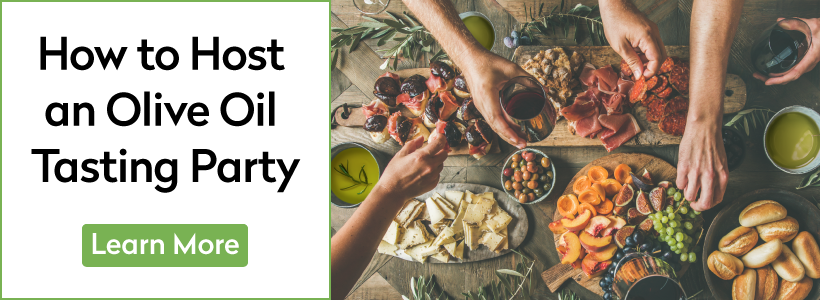
Recipes
 Annie’s Baked Pears with Ice Cream and EVOO Annie also shared her recipe for slow-baked pears. “The long cooking time is essential—they’re just not the same if you try to hurry the dish along,” she explained. Serve them with the best-quality store-bought ice cream or make your own. Note: The pears can also be baked with the skins on for a more rustic… view recipe
Annie’s Baked Pears with Ice Cream and EVOO Annie also shared her recipe for slow-baked pears. “The long cooking time is essential—they’re just not the same if you try to hurry the dish along,” she explained. Serve them with the best-quality store-bought ice cream or make your own. Note: The pears can also be baked with the skins on for a more rustic… view recipe Gai Lan (Chinese Broccoli) Chinese broccoli is a delicious change from American greens. Melissa Wong shared her simple recipe with me. If you can’t find it at your local ethnic markets, feel free to substitute broccoli rabe. Vegetarian versions of oyster sauce are available online or at larger markets. Ingredients 1 pound gai lan or baby gai lan 4… view recipe
Gai Lan (Chinese Broccoli) Chinese broccoli is a delicious change from American greens. Melissa Wong shared her simple recipe with me. If you can’t find it at your local ethnic markets, feel free to substitute broccoli rabe. Vegetarian versions of oyster sauce are available online or at larger markets. Ingredients 1 pound gai lan or baby gai lan 4… view recipe Beet and Goat Cheese Salad Roasting vegetables brings out their depth of flavor and turns a simple salad into a spectacular one. Beets, in particular, become oh so sweet! Ingredients 2 small red or yellow beets, about 6 ounces each Extra virgin olive oil Pinch of kosher or coarse sea salt 4 cups micro greens or arugula 1 ripe pear,… view recipe
Beet and Goat Cheese Salad Roasting vegetables brings out their depth of flavor and turns a simple salad into a spectacular one. Beets, in particular, become oh so sweet! Ingredients 2 small red or yellow beets, about 6 ounces each Extra virgin olive oil Pinch of kosher or coarse sea salt 4 cups micro greens or arugula 1 ripe pear,… view recipe Butterflied Leg of Lamb with Za’atar This lamb dish benefits from a za’atar dry rub, which infuses the meat with rich spices, and an olive oil marinade to keep it extra moist. Both create exceptional pan juices to drizzle over the finished slices. Ingredients For the za’atar: 1 tablespoon cumin seeds 1 tablespoon coriander seeds 1 teaspoon dried thyme 1 tablespoon… view recipe
Butterflied Leg of Lamb with Za’atar This lamb dish benefits from a za’atar dry rub, which infuses the meat with rich spices, and an olive oil marinade to keep it extra moist. Both create exceptional pan juices to drizzle over the finished slices. Ingredients For the za’atar: 1 tablespoon cumin seeds 1 tablespoon coriander seeds 1 teaspoon dried thyme 1 tablespoon… view recipe Chicken and Vegetable Sheet Pan “Stir Fry” Flavorful chicken thighs anchor this easy weeknight dish, which pays homage to Australia’s vibrant Asian community. It has the delicious sauce of a stir fry with the ease of a sheet pan dinner. Feel free to mix up the vegetables depending on what you harvest from your garden or find at the farmers’ market. Broccoli… view recipe
Chicken and Vegetable Sheet Pan “Stir Fry” Flavorful chicken thighs anchor this easy weeknight dish, which pays homage to Australia’s vibrant Asian community. It has the delicious sauce of a stir fry with the ease of a sheet pan dinner. Feel free to mix up the vegetables depending on what you harvest from your garden or find at the farmers’ market. Broccoli… view recipe Roasted “Dirty” Martini Shrimp Cocktail Bored with shrimp cocktails featuring ketchup and horseradish sauces, we decided to develop a recipe that celebrates fresh shrimp’s brininess. Taking our inspiration from dirty martinis, we roasted shrimp with a simple marinade to concentrate their flavor, then served them with a unique cocktail sauce featuring brined olives and the umami-rich Australian condiment Vegemite, available… view recipe
Roasted “Dirty” Martini Shrimp Cocktail Bored with shrimp cocktails featuring ketchup and horseradish sauces, we decided to develop a recipe that celebrates fresh shrimp’s brininess. Taking our inspiration from dirty martinis, we roasted shrimp with a simple marinade to concentrate their flavor, then served them with a unique cocktail sauce featuring brined olives and the umami-rich Australian condiment Vegemite, available… view recipe Soba Noodles and Peas with Olive Oil-Soy Dressing Thin buckwheat noodles, called soba, have been enjoyed in Japan for thousands of years. But it wasn’t until 1993 that the first soba restaurant was opened in the Southern Hemisphere. From Sydney, the concept spread to other Australian cities. Add cooked shrimp (boiled, sautéed, or grilled) if you want to turn simple soba into a… view recipe
Soba Noodles and Peas with Olive Oil-Soy Dressing Thin buckwheat noodles, called soba, have been enjoyed in Japan for thousands of years. But it wasn’t until 1993 that the first soba restaurant was opened in the Southern Hemisphere. From Sydney, the concept spread to other Australian cities. Add cooked shrimp (boiled, sautéed, or grilled) if you want to turn simple soba into a… view recipe Tiger Bomb Coffee My wife Meghan and I fell in love with this refreshing coffee drink created at Tone Coffee in Melbourne. My version adds a splash of fresh-pressed olive oil for polyphenol goodness and more richness. Ingredients 4 shots espresso 1/2 cup heavy whipping cream 1 tablespoon sweetened condensed milk 2 teaspoons extra virgin olive oil Pinch… view recipe
Tiger Bomb Coffee My wife Meghan and I fell in love with this refreshing coffee drink created at Tone Coffee in Melbourne. My version adds a splash of fresh-pressed olive oil for polyphenol goodness and more richness. Ingredients 4 shots espresso 1/2 cup heavy whipping cream 1 tablespoon sweetened condensed milk 2 teaspoons extra virgin olive oil Pinch… view recipe “Grandma in the Mountains” ANZAC Biscuits Named for the Australian and New Zealand Army Corps (ANZAC), these “bickies,” or cookies, were created for soldiers fighting in World War I because they could withstand a long sea journey—ANZAC’s first major military action was in Gallipoli, Turkey. This version, a chewy inside with a crisp outside, comes from Annie Paterson. “It’s my grandmother’s… view recipe
“Grandma in the Mountains” ANZAC Biscuits Named for the Australian and New Zealand Army Corps (ANZAC), these “bickies,” or cookies, were created for soldiers fighting in World War I because they could withstand a long sea journey—ANZAC’s first major military action was in Gallipoli, Turkey. This version, a chewy inside with a crisp outside, comes from Annie Paterson. “It’s my grandmother’s… view recipe Australian Zucchini Breakfast Slice This frittata-like dish is beloved by Australians young and old. Cut into squares, a “slice” can be eaten out of hand and served hot, cold, or warm for breakfast, a main course, side dish, or snack. Though not traditional, I like the salty tang of pickled banana peppers or olives. Ingredients 1/4 cup extra virgin… view recipe
Australian Zucchini Breakfast Slice This frittata-like dish is beloved by Australians young and old. Cut into squares, a “slice” can be eaten out of hand and served hot, cold, or warm for breakfast, a main course, side dish, or snack. Though not traditional, I like the salty tang of pickled banana peppers or olives. Ingredients 1/4 cup extra virgin… view recipe

























